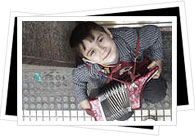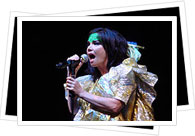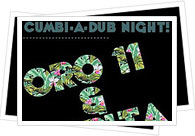
Music and Dance in Argentina is an integral part of traditional and contemporary life, which unites communities and functions as an important social tool for both national and regional identification.
The most obvious music and dance to come out of Argentina is undoubtedly, the Tango, and we'll come to that later, but many of the different regions have their own musical styles which are serve as creative projections of the history and way of life in the area. Many are characterised by the local instruments they use, traditional dress and dance styles.
Music and dance can be a rewarding way of understanding a culture, so keep your eyes and ears peeled as you travel around Argentina for the different styles of traditional music and dance and be prepared to try your hand (or foot) at learning a few steps!

In bars and clubs throughout the country and especially in the key Argentine cities you will come across Popular Music, some of which will come from Spain and other parts of Latin America and a lot which comes from Britain and the United States. Rock and pop are especially common but recent years have also seen a big wave of electro dj's spinning out dance tunes on their decks in all the big clubs, especially in Buenos Aires.
These influences can also be seen in the popular music that is produced in Argentina, for example, Argentine rock bands started emerging in the mid 1960's influenced principally by British rock. As the style grew in popularity, Argentine bands began to mix in local sounds and latin rhythms in order to create an original sound, distinct to Argentine rock.
This is an important Latin American music movement which rocketed into popular favour during the 50's and 60's. In Argentina Nueva Canción artists became particularly important socially during the harsh dictatorship of the 1970's when the lyrics, which always deal with political issues, held a lot of meaning for the public. The style music was initially influenced by the rhythm of Chilean national dance, Cueca with other Latin American folk traditions and the modernity of British rock.
Traditional Folk music characteristic of the indigenous populations of the Andes is still prominent in Argentina. It is particularly identifiable by the soft sound of wind, percussion and string instruments. The most common place to hear this type of music today is in the northwestern regions of the country, where the largest concentration of indigenous inhabitants live.
This traditional style of music and dance is most characteristic of the eastern region of El Litoral, especially in and around the stunning city of Corrientes. Chámame has become a deep rooted symbol of local tradition in this area of Argentina, however, its development was inspired by influences from much farther afield. Chámame is, in a sense, an Argentine take on the traditional music styles of Germany, Poland and Austria, where polkas and waltzes were the order of the day. These were the first dances in Europe that involved close partner dancing and were considered as shocking. Over time these new European folk styles were blended with the African, Caribbean and Amerindian rhythms of Latin America and Argentina's Chámame was born.
Whilst exploring the city and province of Córdoba you are likely to hear the distinctive rhythms of Cuarteto drifting past. This musical genre comes from the region and is such an important part of Córdoba's culture that it has been carefully preserved and is just as popular today. Cuarteto features accordians, pianos and violins influenced by Spanish and Italian folk music. However, the upbeat rhythm and stylised partner dancing, resemble merengue more closely. Cuarteto has produced some national icons, with singers like Rodrigo shooting to stardom in the 1990's and it shows no signs of falling from popularity today.

This popular music form is originally from Colombia and employs the mellow sounds of percussion instruments and woodwind. Cumbia hit Argentina by storm in the late 1990's and is principally popular with the lower, or working classes. Innovative young Argentine musicians set to work on developing Cumbia Villera, Argentina's own distinctive form of Cumbia which incorporated a catchy tropical sounding caribbean beat with the original folk music sound. The lyrics tend to deal with drugs, robbery and other taboo topics which has meant that Cumbia remains somewhat disregarded by the Argentine upper classes.
If you travel to Santiago del Estero in Argentina's Northwest region, you will undoubtedly come across the catchy rhythms of Chacarera. The late nineteenth century saw the main development of the music which uses soft Spanish guitar and upbeat drum rhythms to create a lively and distinctive style. The origin is unknown, but the dance became particularly common in rural, farmland areas. The idea is to dance in groups around a square.
Click here for detailed history and useful information about Tango in Argentina.